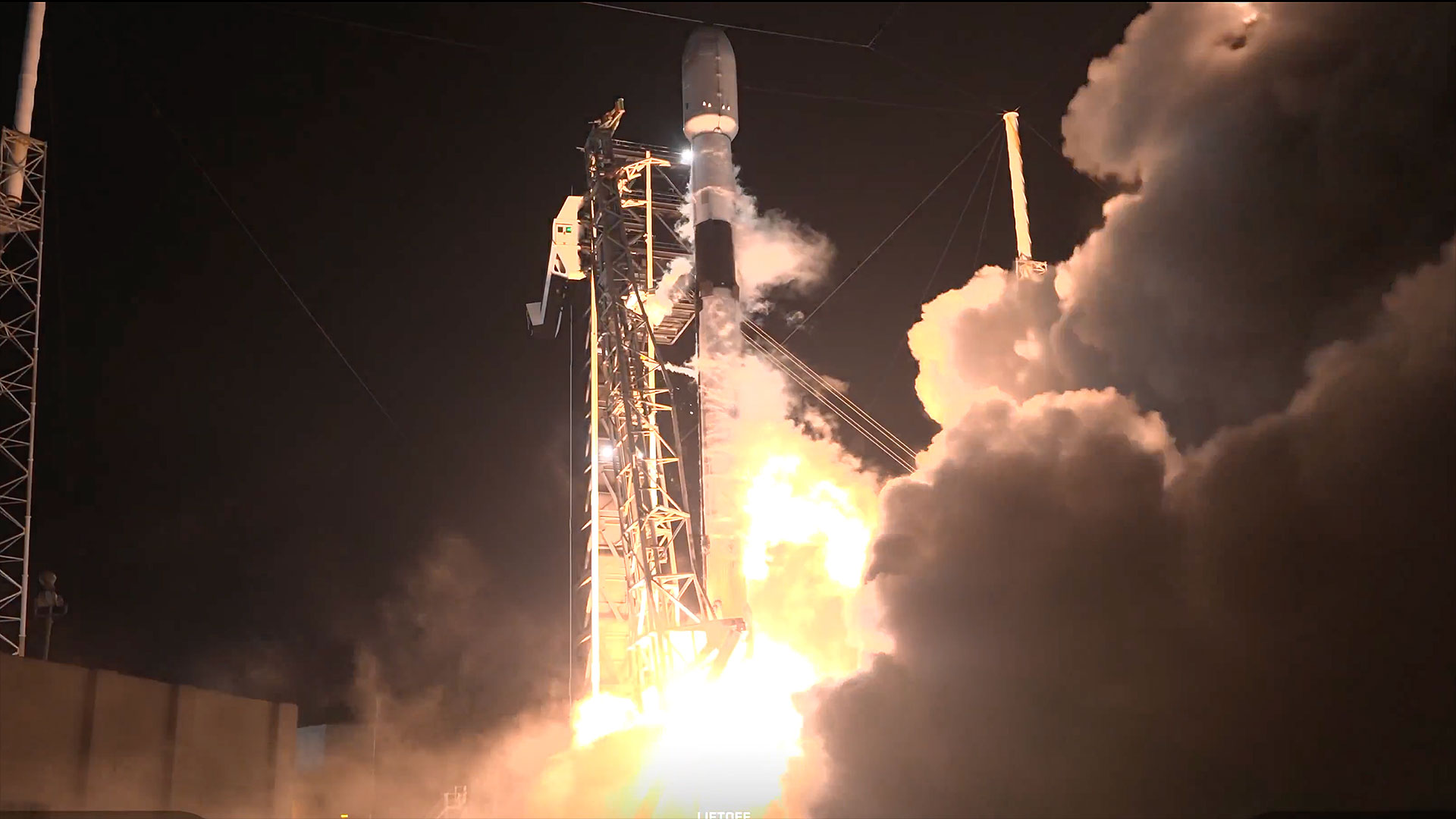In Images: The Amazing Discovery of a Neutron-Star Crash, Gravitational Waves & More
Neutron Stars Collide
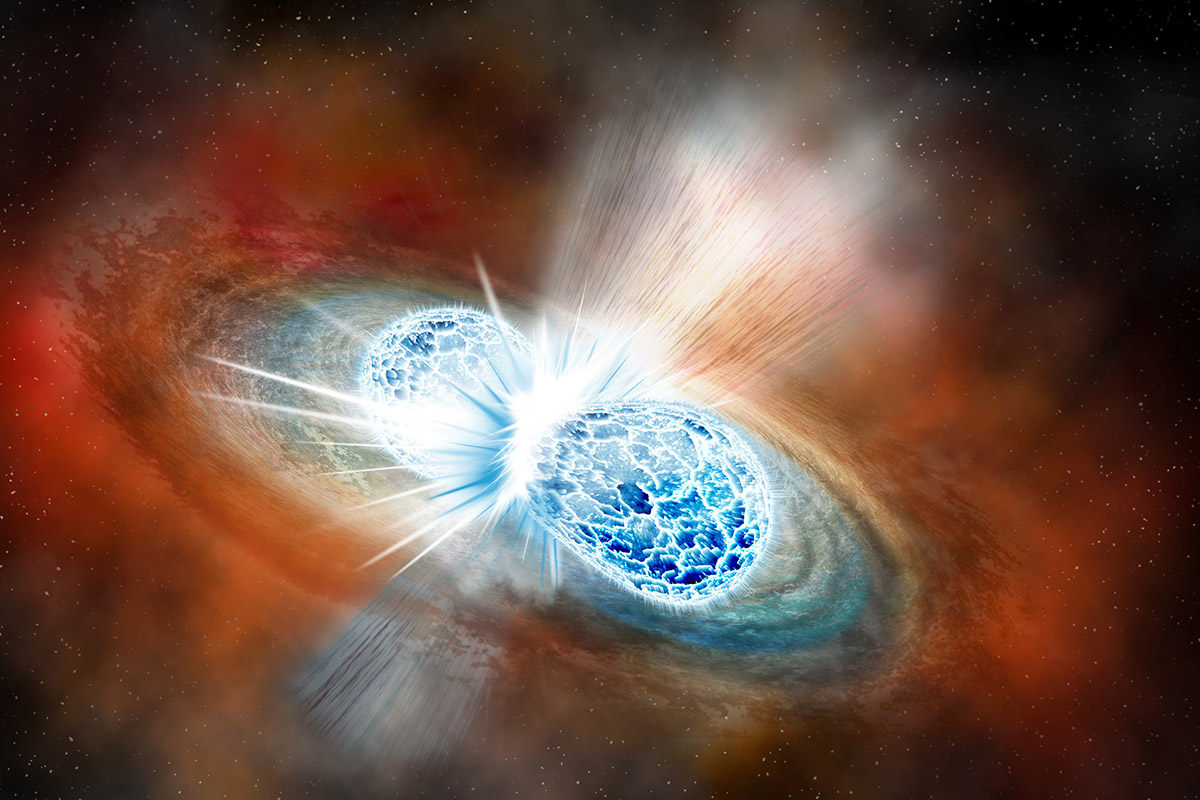
For the first time ever, scientists around the world have discovered gravitational waves emanating from the collision of a pair of neutron stars. [Full Story: First Detection of Gravitational Waves from Neutron-Star Crash Marks New Era of Astronomy]
Here: An artist's concept of the explosive collision of two neutron stars.
Creating Ripples in Spacetime
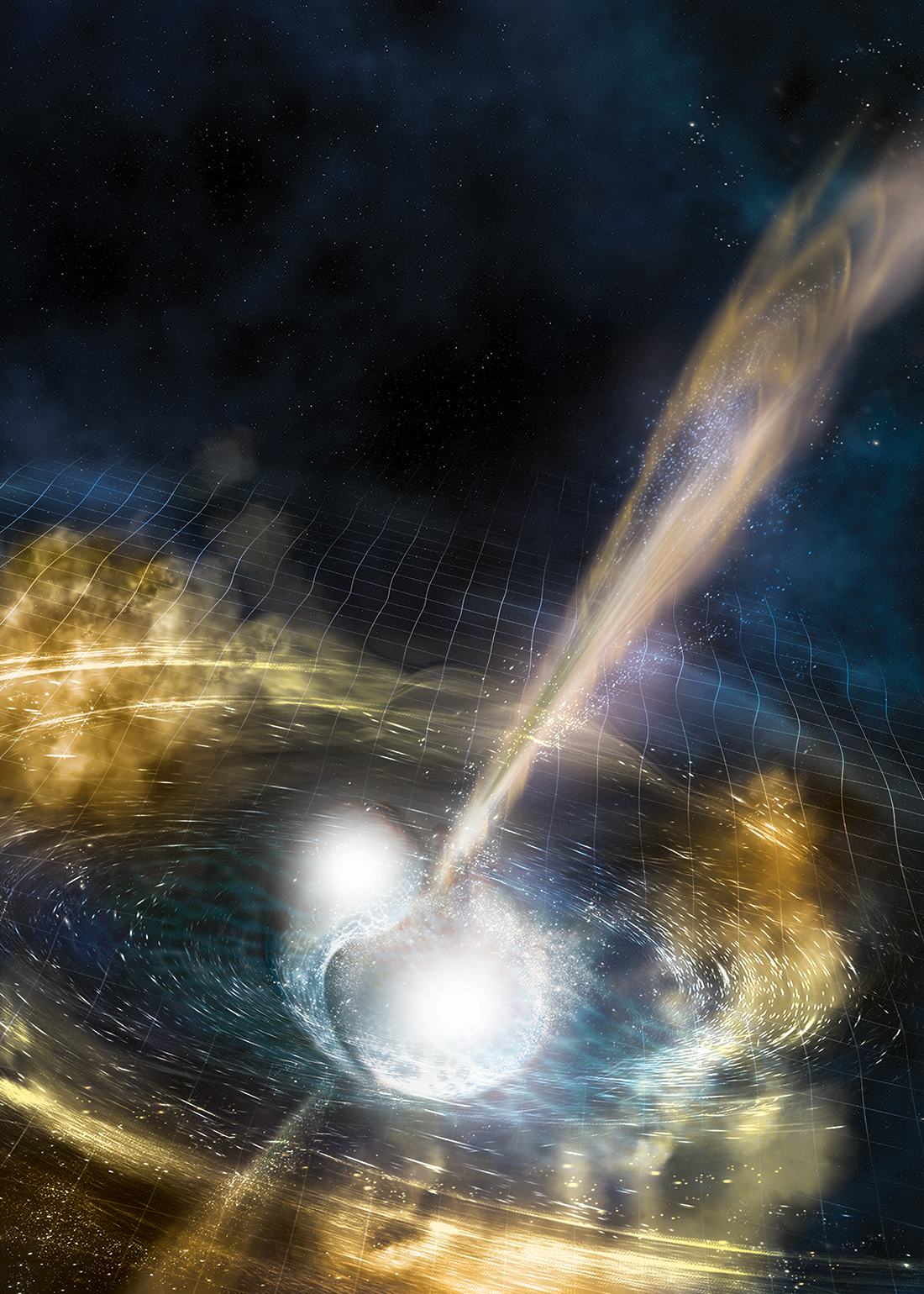
This illustration depicts the merger of two neutron stars. The rippling spacetime grid represents gravitational waves that travel out from the collision, while the narrow beams show the burst of gamma rays launched just seconds after the gravitational waves. Swirling clouds of material ejected from the merging stars glow with visible and other wavelengths of light.
'Multi-Messenger' Research
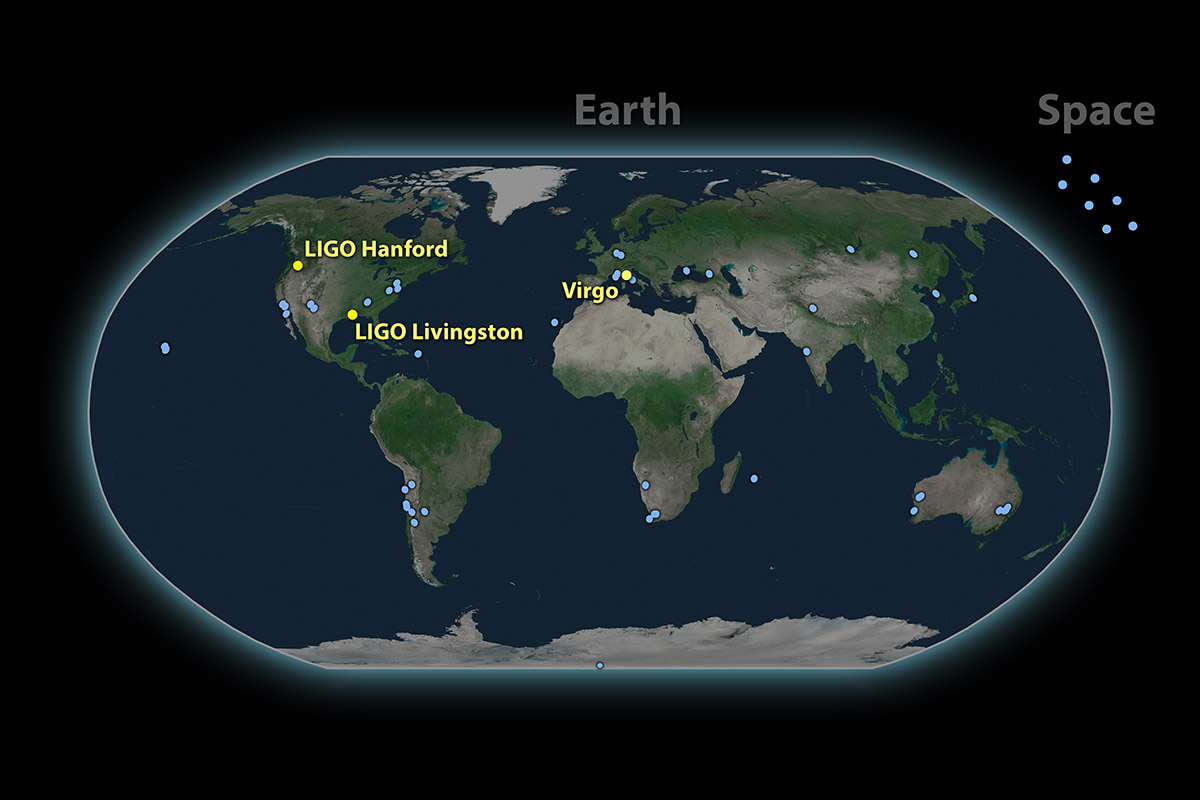
This maps shows the approximately 70 light-based observatories that detected the gravitational-wave event called GW170817. On Aug. 17, 2017, the LIGO and Virgo detectors spotted gravitational waves from two colliding neutron stars. Light-based telescopes around the globe observed the aftermath of the collision for weeks. [How Gravitational Waves and 'Multi-Messenger' Research Will Change Astronomy]
Spotting the Source

On Aug. 17, 2017, the Laser Interferometer Gravitational-Wave Observatory detected gravitational waves from a neutron star collision. Observatories identified the source of the event in the galaxy NGC 4993 and located the associated stellar flare known as a "kilonova." Hubble watched that flare of light fade over the course of 6 days, as shown in these images from the space telescope.
NGC 4993
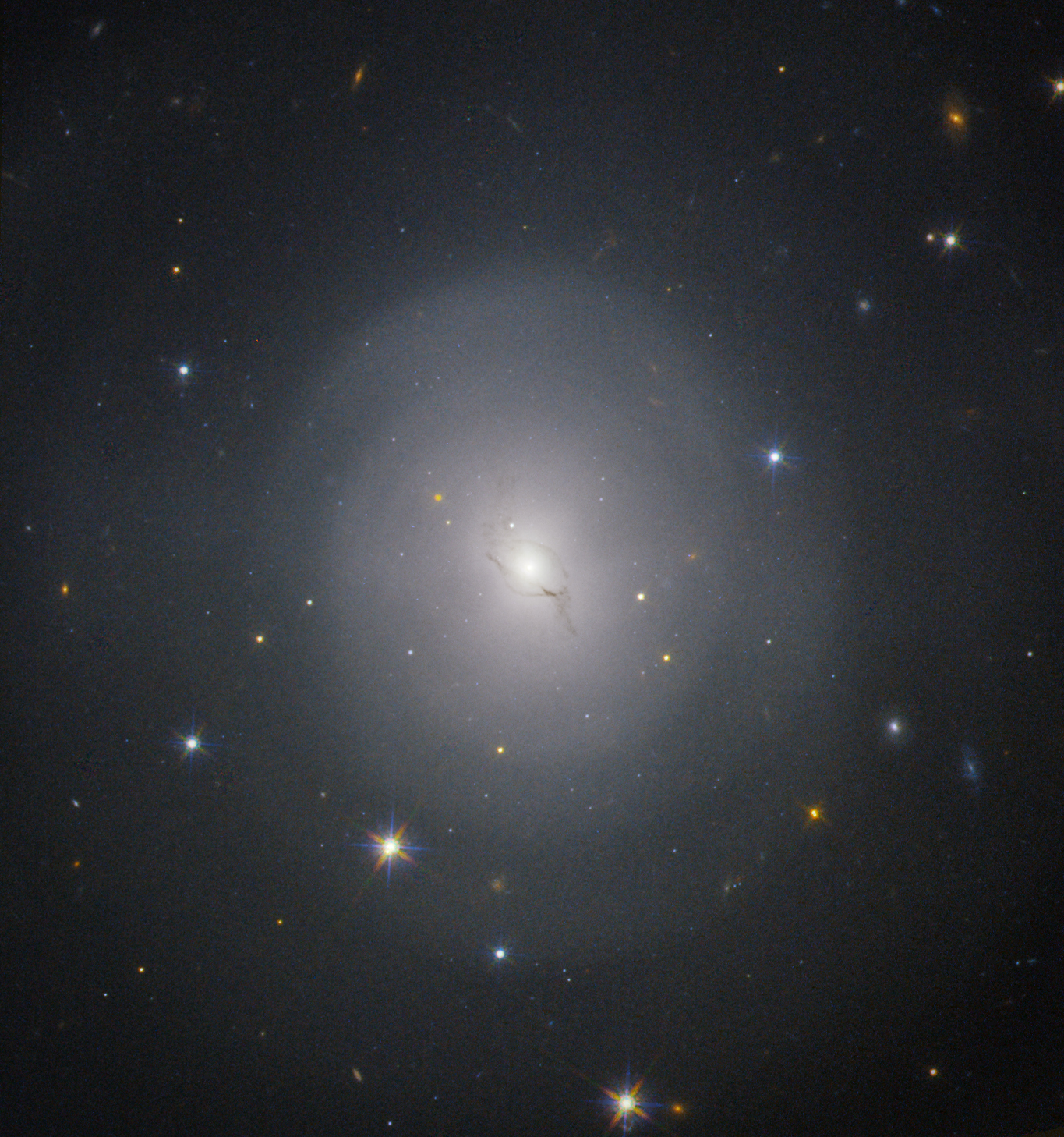
The galaxy NGC 4993, where two neutron stars collided, is located about 130 million light-years from Earth. The event also resulted in a flare of light called a kilonova, which is visible to the upper left of the galactic center in this Hubble Space Telescope image.
How a Kilonova is Born
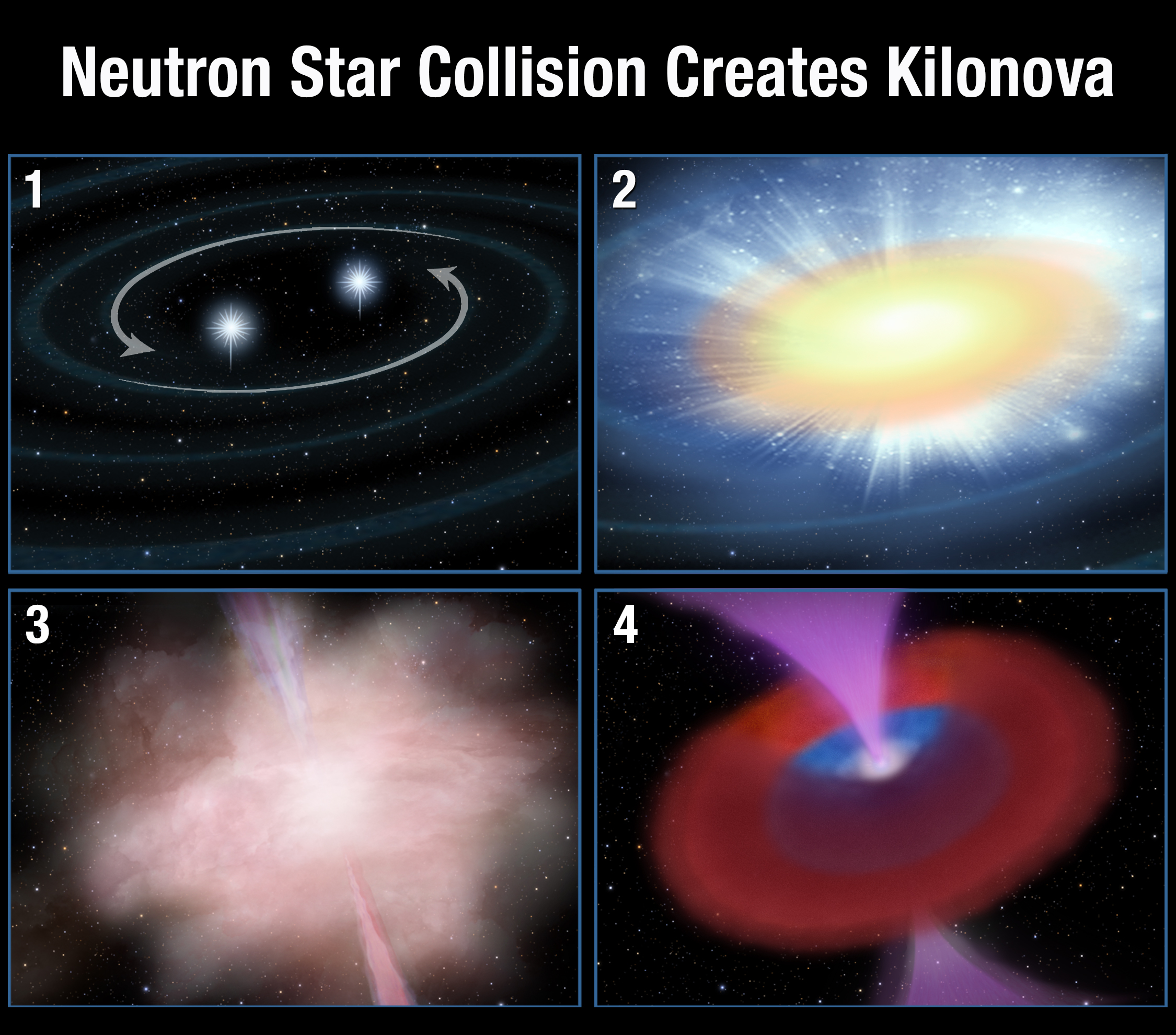
1) A pair of neutron stars orbiting one another in a binary system spiral together. Orbital momentum dissipates through the release of gravitational waves. 2) In the final milliseconds, the two objects merge and produce a gamma-ray burst lasting just a fraction of a second. 3) A fraction of the mass of the merging neutron stars is flung out during the merger. This hot, radioactive material expands and emits infrared light. The explosion is about 1,000 times brighter than a classical nova and is called a “kilo nova.” 4) A massive neutron star or black hole remains after the event surrounded by an expanding cloud of debris.
How Gravitational Waves Work (Infographic)
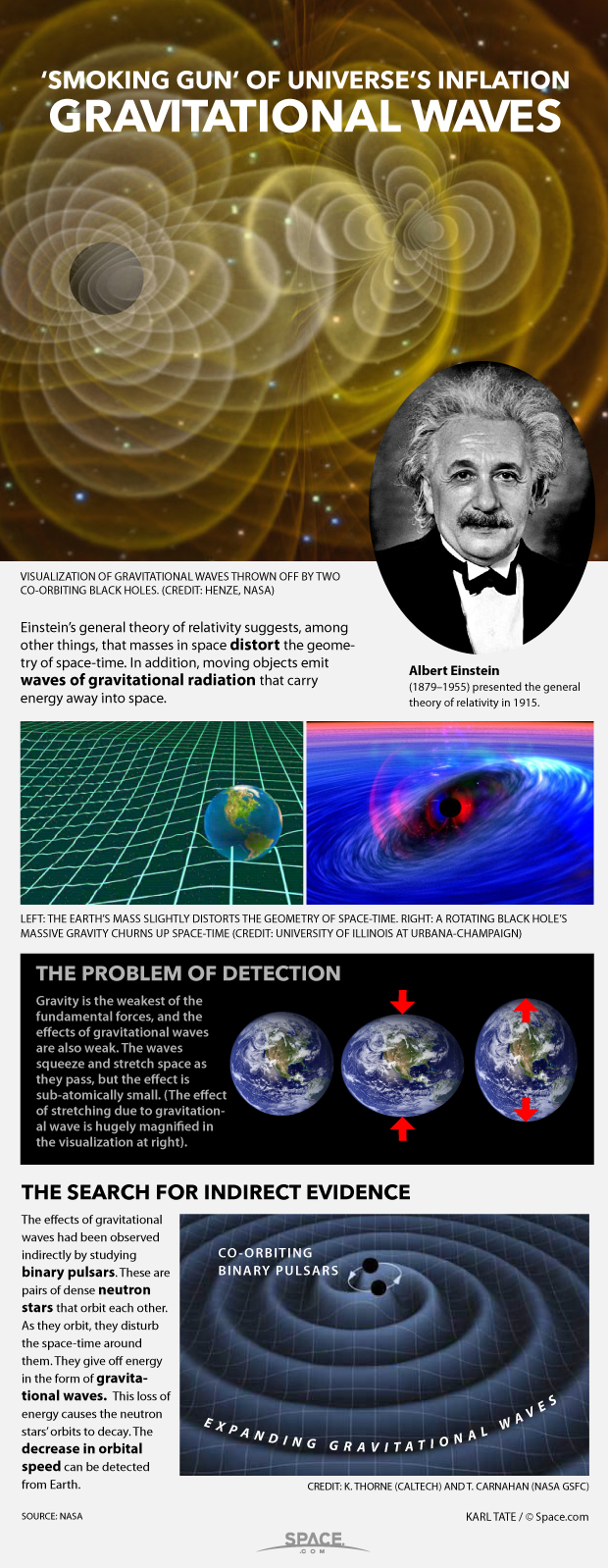
Moving masses generate waves of gravitational radiation that stretch and squeeze space-time. See how gravitational waves work in this Space.com infographic.
Breaking space news, the latest updates on rocket launches, skywatching events and more!
Neutron-Rich Debris
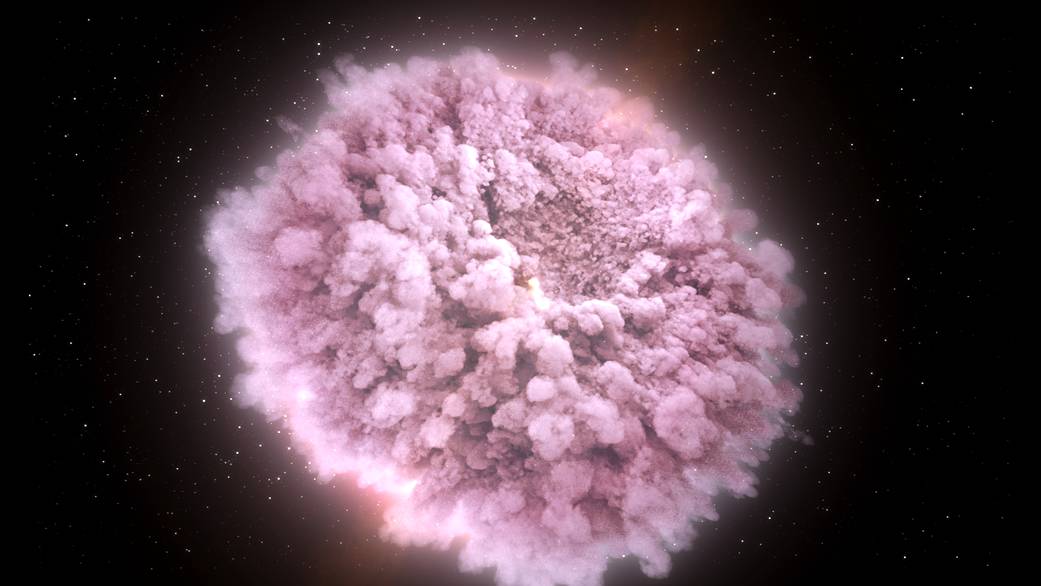
This illustration shows the expanding cloud of debris stripped from two neutron stars just before they collided. This neutron-rich debris forged some of the universe's heaviest elements, like gold and platinum.
Hubble & Swope Telescopes
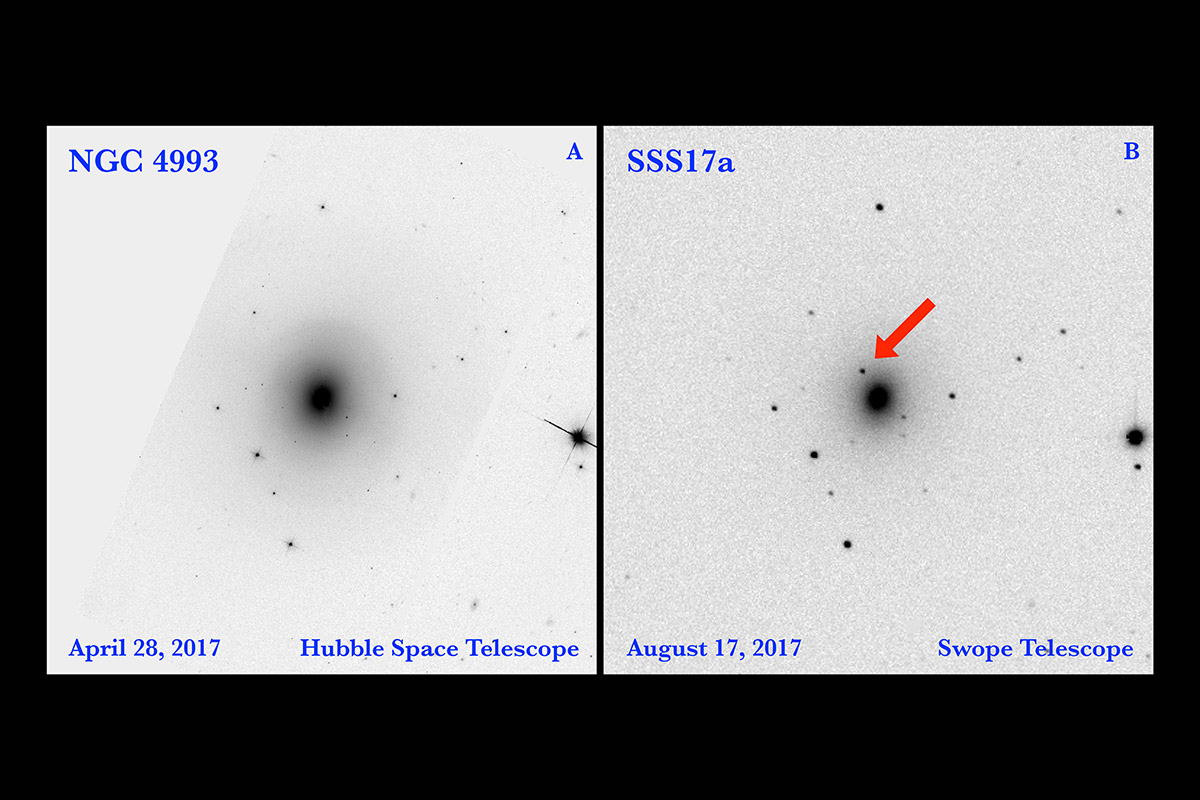
Right: An image taken on Aug. 17, 2017, with the Swope Telescope at the Las Campanas Observatory in Chile shows the light source generated by a neutron-star merger in the galaxy NGC 4993. Left: In this photo taken on April 28, 2017, with the Hubble Space Telescope, the neutron star merger has not occurred and the light source, known as SSS17a, is not visible.
Swope & Magellan Telescopes
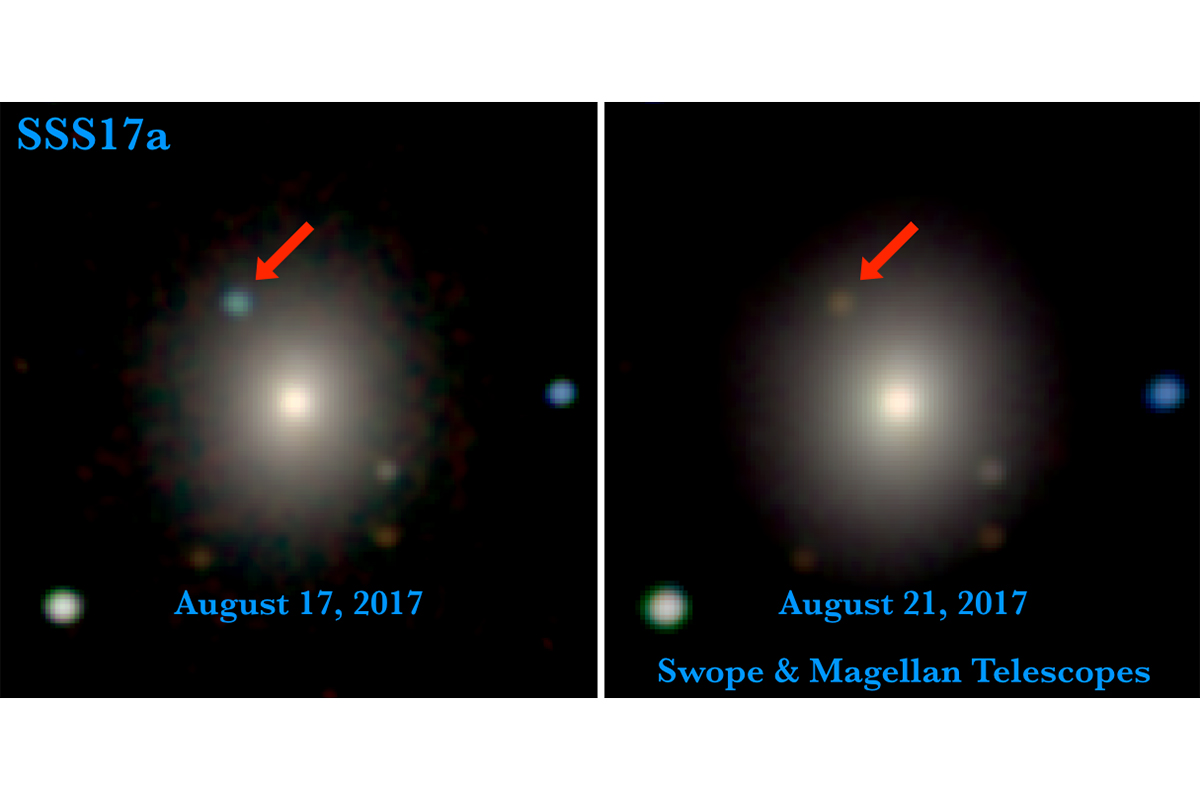
Swope and Magellan telescope optical and near-infrared images of the first optical counterpart to a gravitational-wave source, SSS17a, in its galaxy, NGC 4993. The left image is from August 17, 2017, 11 hours after the LIGO-Virgo detection of the gravitational-wave source, and contains the first optical photons from the source. The right image is from four days later, when SSS17a—the aftermath of a neutron star merger—faded significantly and its color became much redder.
NGC 4993
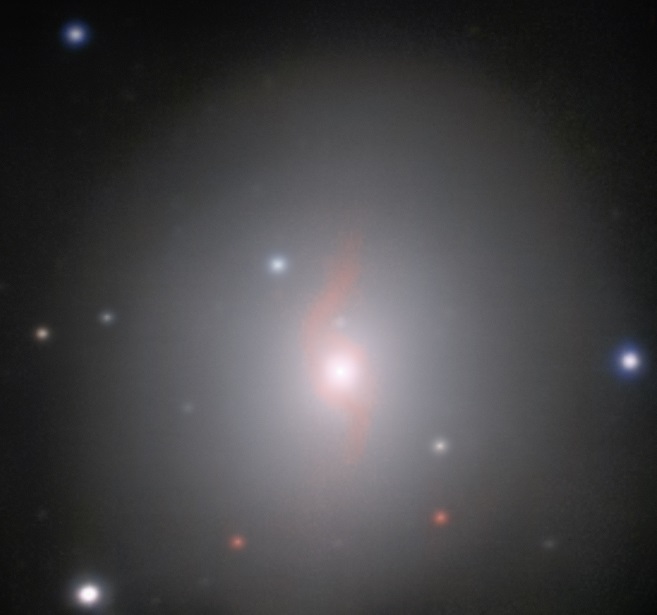
This image from the MUSE instrument on ESO’s Very Large Telescope at the Paranal Observatory in Chile shows the galaxy NGC 4993, about 130 million light-years from Earth. The aftermath of the explosion of a pair of merging neutron stars, a rare event called a kilonova can be seen just above and slightly to the left of the center of the galaxy.
Join our Space Forums to keep talking space on the latest missions, night sky and more! And if you have a news tip, correction or comment, let us know at: community@space.com.

Space.com is the premier source of space exploration, innovation and astronomy news, chronicling (and celebrating) humanity's ongoing expansion across the final frontier. Originally founded in 1999, Space.com is, and always has been, the passion of writers and editors who are space fans and also trained journalists. Our current news team consists of Editor-in-Chief Tariq Malik; Editor Hanneke Weitering, Senior Space Writer Mike Wall; Senior Writer Meghan Bartels; Senior Writer Chelsea Gohd, Senior Writer Tereza Pultarova and Staff Writer Alexander Cox, focusing on e-commerce. Senior Producer Steve Spaleta oversees our space videos, with Diana Whitcroft as our Social Media Editor.
